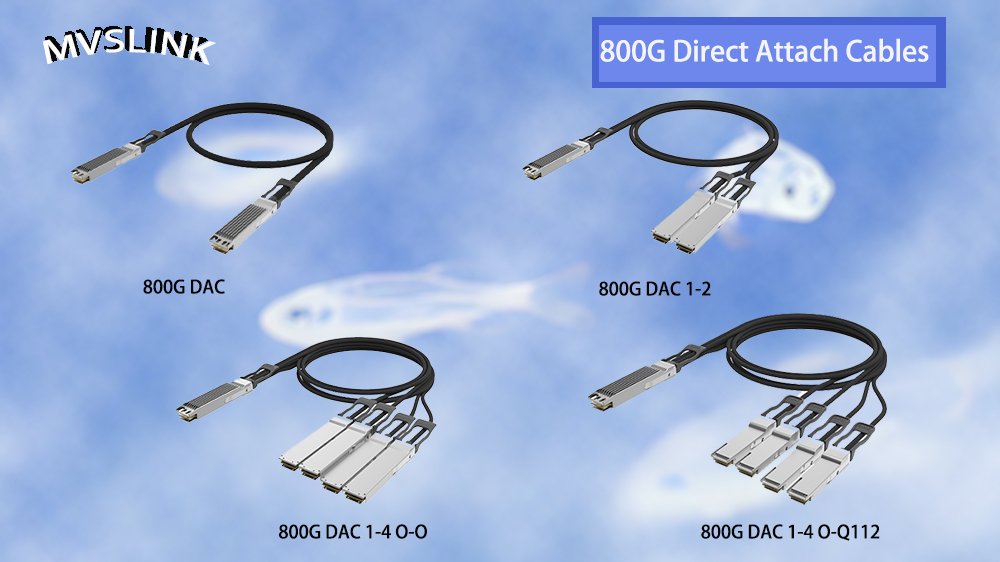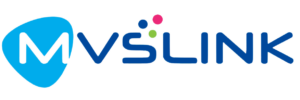Direct attach cables (DAC) are interconnect solutions that are widely used in data centers and network environments. This article will explore what DACs are, how to use them (advantages and disadvantages), the classification of DACs and their comparisons to other optical transceivers’ connectivity solutions, and the common data-rate types of DACs.
Table of Contents
ToggleWhat is a Direct Attach Cable (DAC)?
Direct Attach Cable (DAC) is a fixed-length, pre-terminated cable assembly with integrated transceiver modules at both ends. It is typically used to connect network devices, such as switches, routers, and servers, over short distances, typically within or between adjacent racks. DACs are available in copper or fiber optic models, with copper being more common in short-range applications due to its cost-effectiveness.

How to use them?
DACs are mainly deployed in high-speed data transmission applications, such as:
Datacenter: Connect servers and switches for high-speed data transfer within the rack.
High-performance computing (HPC): Ensure low latency for compute clusters.
Storage Area Network (SAN): Provides reliable connectivity to storage devices.
They are an affordable and efficient solution for short-distance connectivity, often replacing more complex fiber setups in these applications.
Benefits of DAC
Cost-effective: DACs are less expensive than traditional fiber optic cables and optical transceivers.
Easy to deploy: The plug-and-play design simplifies installation.
Low power consumption: Ideal for passive DACs that do not require an additional power supply.
High reliability: Factory-terminated ends reduce potential points of failure.
Disadvantages of DAC
Limited distance: Active copper DACs are usually only valid for up to 7 meters.
Volume: Copper DACs can be thicker and less flexible than fiber optic cables.
Interference: Susceptible to electromagnetic interference (EMI) in certain environments.
Passive DAC vs. Active DAC
DACs are broadly divided into two types:
Passive DAC:
The signal amplification is not included. It can reduce costs and power consumption. Meanwhile, it is suitable for short distances (generally 0.5~3 meters).
Active DAC:
A longer distance (generally 3~7 meters) can be realized with an active signal processing function. It is more expensive and requires an external driver chip.
DAC and optical transceiver modules
While both DACs and optical transceiver modules facilitate high-speed connectivity, their applications differ:
DACs are ideal for short-range in-rack connections due to their simplicity and cost advantages.
Optical transceivers are more suitable for longer distances using fiber optic cables, typically more than 100 meters.
So these two solution are widely to mixed used in Data center to balance cost and performance over different distances.
Commonly used DAC cable series
DAC cables are available in a variety of configurations to meet specific network requirements. Here are some content of the DACs:
SFP+ to SFP+ DAC: Supports 10Gbps connectivity.
QSFP+ to QSFP+ DAC: Designed for 40Gbps links.Designed for FDR connectivity.
QSFP28 to QSFP28 DAC: Capable of handling speeds of 100Gbps.Designed for HDR connectivity.
QSFP56 to QSFP56 DAC: Capable of handling speeds of 200Gbps.Designed for HDR connectivity.
QSFP-DD to QSFP-DD DAC: Capable of handling speeds of 400Gbps. Designed for NDR connectivity.
OSFP-to-OSFP DAC: Capable of handling speeds of 800Gbps.Designed for NDR connectivity.
Conclusion
Direct Attach Cables can provide a cost-effective, high-performance solution for short-distance network applications. With their simplicity, reliability, and adaptability, DACs remain a staple of modern data centers and enterprise networks. Understanding their strengths and limitations enables network designers to maximize efficiency while minimizing costs.

